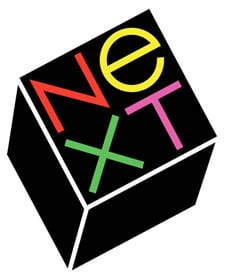This article is more than 1 year old
The life and times of Steven Paul Jobs, Part One
From grade-school hellion to iMac redemption
Crash landing
The year 1993 was perhaps the lowest point in Steve Jobs' career. No, scratch that – 1993 was the lowest point in Steve Jobs' career.
An article in Fortune in February of that year makes clear the ambivalence that the industry felt for Jobs at the time. "Sometimes it's hard to tell whether Steve Jobs is a snake-oil salesman or a bona fide visionary," it reads, "a promoter who got lucky or the epitome of the intrepid entrepreneur."
The article goes on to describe Jobs' last-ditch efforts to save NeXT by porting its NeXTStep operating system to run on Intel 486 processors – remember, NeXT boxes ran on Motorola 68030s and 68040s – then licensing it to other companies. The port, to be called NeXTStep 486, had been announced the previous January at NeXTworld Expo, but it hadn't yet appeared.
"It's always taken me twice to get it right," Jobs is quoted as saying. "You never heard of the Apple I."
At the time, Jobs considered Microsoft's Cairo project and Apple and IBM's Taligent effort to be NextStep's prime competitors – and he wasn't too worried about the latter. "Apple has a thousand software engineers," he told Fortune, "who have realized that Taligent is their enemy." IBM, he said, "can't evangelize its way out of a paper bag."
In this NeXTStep demo, Jobs takes some jabs at the computer he helped design in the early 1980s
By this point, most of NeXT's senior execs had bailed or been tossed: cofounders Bud Tribble, Rich Page, and Susan Barnes – software and hardware leads and CFO, respectively – marketing VP Mike Slade, sales VP Todd Rulon-Miller, and marketing manager Jeff Spirer. "Sometimes the people you hired five years ago aren't the right ones to take it forward," Jobs said. "It's nothing personal."
The previous year, Jobs had courted and won a hard-nosed Brit, Peter van Cuylenburg, to be NeXT's president and COO – and to please NeXT's 17.9 per cent investor, Canon. His tenure proved brief.
After crowding out long-term NeXTers – "I've put pressure on the company, and not everyone was willing or able to accept it," he told Fortune – van Cuylenburg announced that he was leaving NeXT in March 1993, either fired, resigning or a bit of both.
As van Cuylenburg told InfoWorld: "Steve [Jobs] wanted to regain control of the company. There wasn't a meaningful job for me to do."
There are unconfirmed reports that before van Cuylenburg left NeXT, he went behind Jobs' back and called Scott McNealy at Sun, asking him to buy NeXT and install him as CEO. True or not, Sun didn't bail out NeXT.

Jobs paid $100,000 for the NeXT logo ...
The same day that the Fortune article appeared in which Jobs discussed both hardware and software plans for NeXT, InfoWorld ran a front-page article that began: "Next Computer will transform itself into a software company, ceasing production of its workstation line and laying off a large number of employees, sources said."
On February 10, Jobs confirmed the rumor. Canon bought the hardware business for an undisclosed amount after having invested $120m in cash and $55m in debt. Of NeXT's 530 remaining employees, 230 were laid off, and another 100 went to Canon. The remaining 200 stayed with Next Software.
Jobs tried to put a positive spin on leaving the hardware business. "We understand we could work really hard for the next few years and emerge as a good second-tier hardware company," he told The New York Times. "But ... we have a chance to be a first-tier software company."
In the InfoWorld article that leaked Jobs' plan to dump hardware and focus only on NeXT software, one analyst was quoted as saying: "This is probably the first really smart business decision Jobs has ever made." He proved to be correct, though in ways he could never have imagined.
NeXTStep Release 3.1, shipped on May 25 at NextWorld Expo in San Francisco, included support for both Motorola and Intel instruction sets, combined in what NeXT called a Multiple Architecture Binary. The Intel-centric install became known as Release 3.1 for Intel Processors, renamed from NeXTStep 486 due to added support for Pentiums.
As upbeat as Jobs attempted to appear in public, however, his heart was in hardware – and he had ploughed millions of dollars of his now-dwindling fortune into NeXT, trying to prove that his tenure as Apple's founder was not a fluke.
When Canon held a now-famous auction on September 15, selling off NeXT's office furniture, manufacturing robots, cafeteria equipment, and unsold NeXT computers at fire-sale prices, Jobs' hardware days seemed over for good.
The next month, Jobs received another blow: after Pixar's creatives held a disastrous screening of their progress on Toy Story for Disney brass on November 19, Disney headman Jeffrey Katzenberg stopped development of the film that Jobs presumably hoped would save Pixar.
"Guys, no matter how much you try to fix it," Disney animation chief Peter Schneider told them, citing the unpleasant personalities of the film's two lead characters as presented in the screening, "it just isn't working."
For Steve Jobs, Christmas 1993 could not have been jolly.

